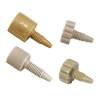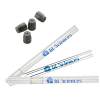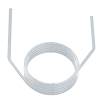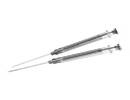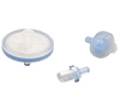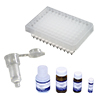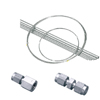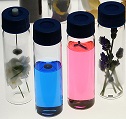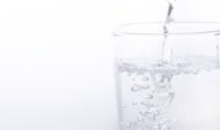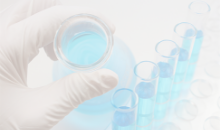Applications
Sugars
Sugars are found in almost every food. Gas Chromatography is widely used for its trace analysis due to its high resolution efficiency and ability to effectively quantitate. Sugars, however, cannot be analyzed directly. Polysaccharides and large oligosaccharides must be decomposed into their component monosaccharides, and converted to derivatives before analysis. Hydrolysis or methanolysis are used for the common decomposition. In methanolysis, the sugar is heated in a mixture of HCl/methanol so as to give the methyl glycosides of the component monomers. HCl concentration must be varied depending on the sample, and it is convenient to use a prepared HCl/methanol reagent which is adjusted to the desired concentration with anhydrous methanol. After neutralization, the sugar obtained is silylized and analyzed by GC. In the case of aminosaccharides, it is first necessary to acetylate the amino group. As the silylating agent, TMSI-H or TMSI-C can be used. TMSI-C, in particular, has the advantage that the reaction proceeds even when a small amount of water exists, and it is therefore suitable for analysis of monosaccharides in aqueous. After methanolysis, sugars exist as a mixture of α and β anomers in pyranose and furanose forms which give several peaks, resulting difficult identification. In order to obtain a single peak from each sugar, the sugar are first reduced with sodium borohydride and subject to subsequent acetylation then analyzed. Care should be taken as some sugars replaced to give the same sugar alcohol. The packing material have to be changed with the components to be separated; however, it is better to choose a stationary phase that can withstand high temperature, and a silanized support such as Uniport HP.




